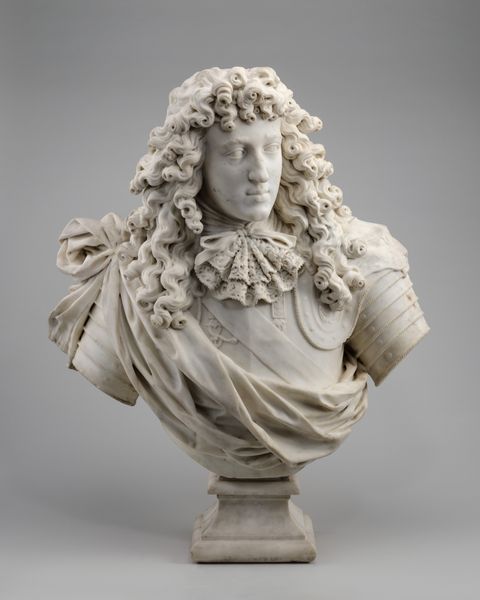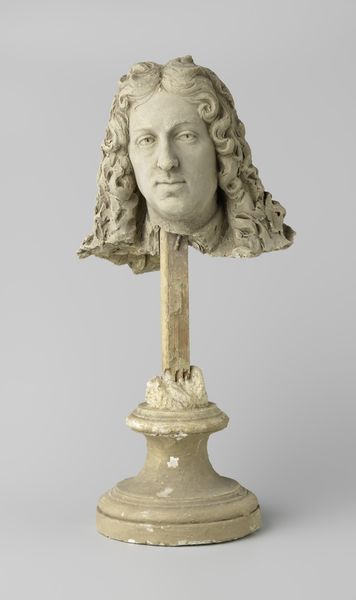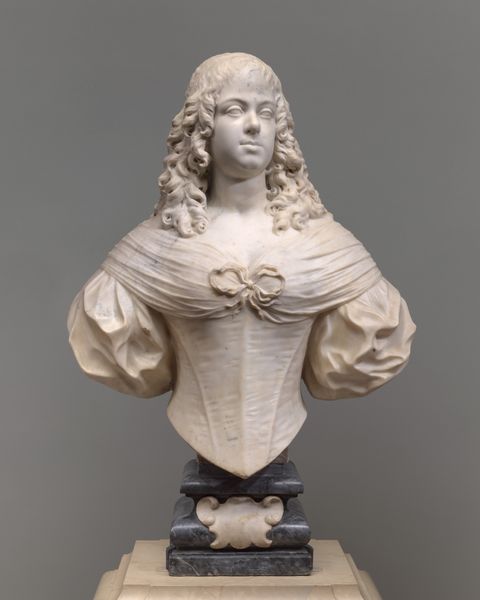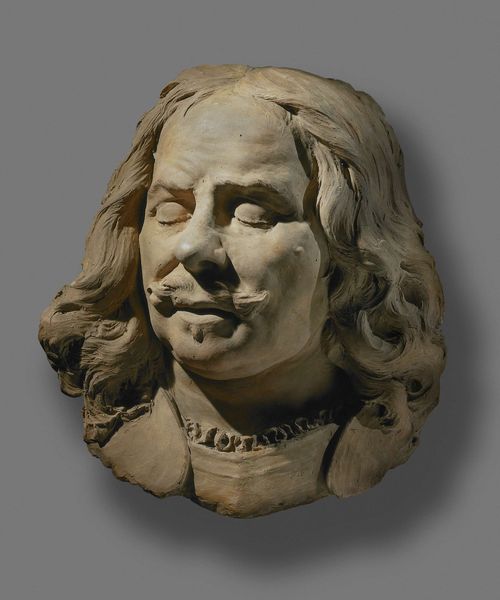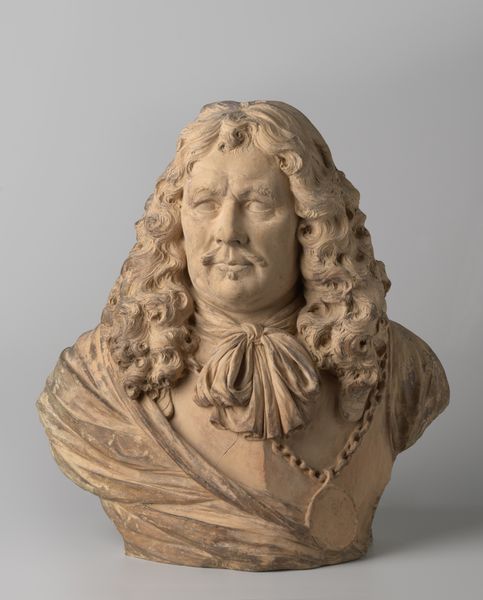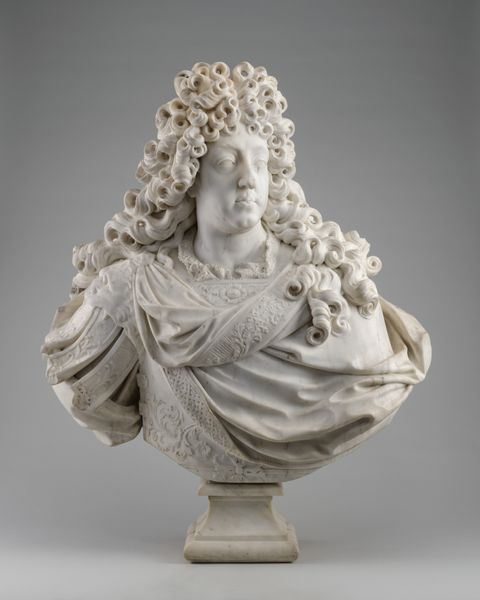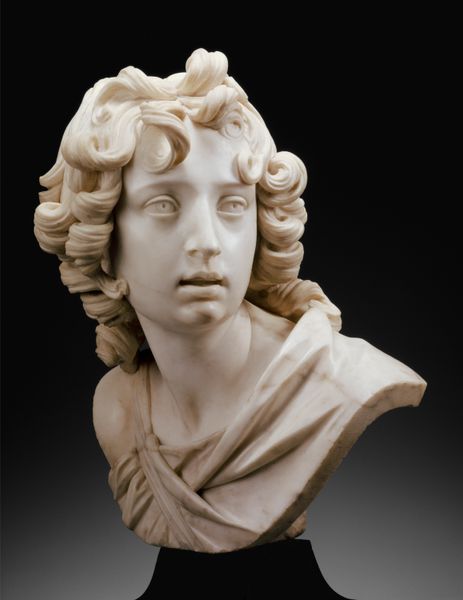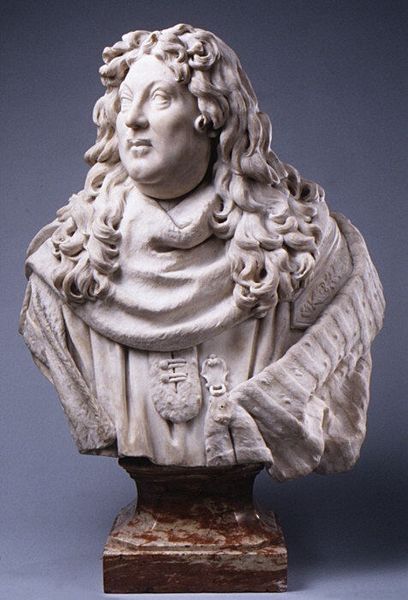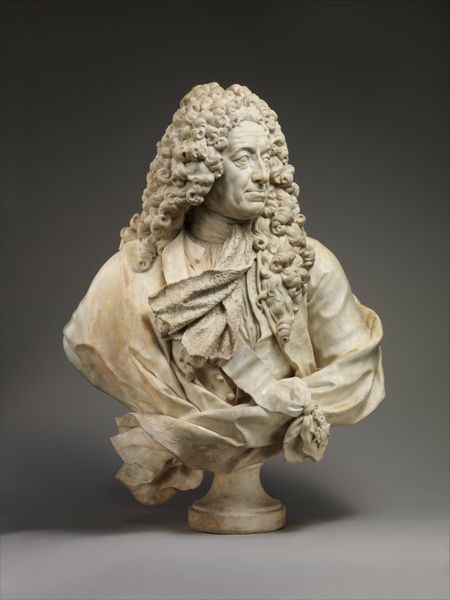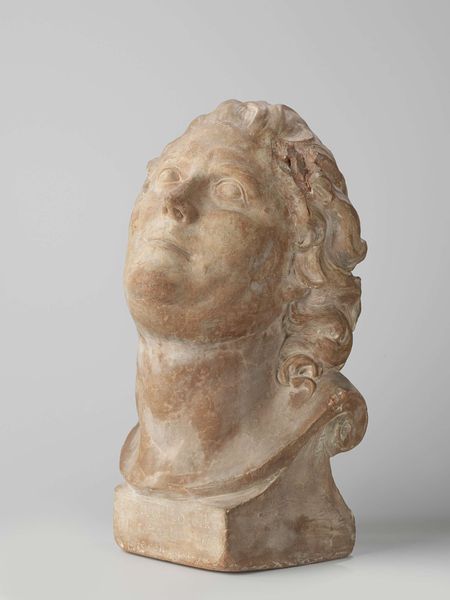
alabaster, relief, sculpture, marble
#
portrait
#
baroque
#
sculpture
#
alabaster
#
relief
#
sculpture
#
marble
Copyright: Rijks Museum: Open Domain
Rombout Verhulst created this terracotta portrait bust of Baron Willem Joseph van Ghent in the Netherlands sometime in the second half of the 17th century. The closed eyes and serene expression might lead us to consider the social functions of portraiture at the time, particularly within aristocratic circles. Was this intended as a posthumous depiction, or was it meant to capture an idealized version of the Baron, perhaps alluding to his inner virtue and moral character? During the Dutch Golden Age, portraiture served as a means of asserting social status and commemorating individual achievement. Aristocrats, like van Ghent, used these images to project an image of power. To fully understand the social and institutional context of this bust, historians might consult period documents, genealogical records, and studies of artistic patronage. This way, the portrait becomes more than just an aesthetic object; it is a historical artifact embedded in a network of social relations.
Comments
rijksmuseum about 2 years ago
⋮
Lieutenant-Admiral Willem van Ghent was fatally wounded by English fire during the Battle of Solebay on 7 June 1672. He was 46 years old. The outcome of the battle against a joint English and French fleet was indecisive. Van Ghent was buried in the Domkerk in Utrecht. This death mask is a study for his tomb, which Rombout Verhulst completed in 1676.
Join the conversation
Join millions of artists and users on Artera today and experience the ultimate creative platform.
